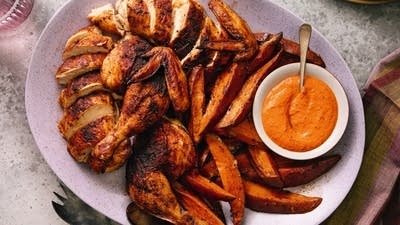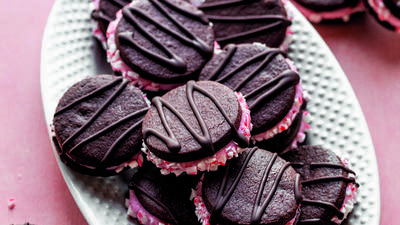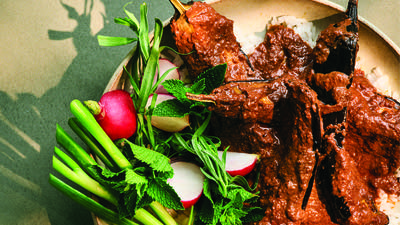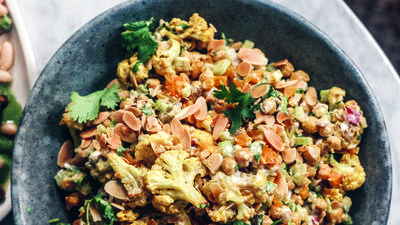
"You can try it out for next to nothing," says Tom Owen of Sweet Maria's.
Lynne Rossetto Kasper: I want to talk about home coffee roasting. If we want to just give it a shot -- not make any kind of major investment -- is there a way to get into it to try it out?
Tom Owen: That's a funny question because it's definitely something for fanatics. This very reasonable approach you have almost doesn't gel with the kind of people out there who roast their own coffee. They tend to just go for it.
LRK: This is do I want to become a fanatic, or do I not want to become a fanatic?
TO: Right. That's so reasonable because the amazing thing about home roasting is it's not home beer brewing or wine making. It's actually a lot easier. You can try it out for next to nothing. The best way is the hot air popcorn popper. Do you remember those? It's a great coffee roaster.
Now they're a little hard to find. The home hot air popcorn popping craze is kind of over. But there are a few drugstores you can still find them in new. Thrift stores are fantastic for these things.
If you go to a thrift store and you get one, look down into that cylinder. If it's a flat metal bottom and has vents around the edge that would swirl the popcorn or coffee around in a circular pattern …
LRK: Because hot air comes through there.
TO: Exactly. That's the best kind. The West Bend Poppery II is one you might see a lot of; it's a great coffee roaster. Then there's the holy grail of all popcorn popper/coffee roasters -- they call it the Poppery Mark 1. It just says Poppery on it. You'll pick this one up and you'll notice it's three times as heavy as all the other ones. And three times as ugly too, by the way.
But you can have a small business for yourself going to thrift stores. Buy these for $2, and on eBay they go for $30, $50 or $60.
LRK: I have the popper. I plug it in. I have beans that are green, unroasted beans?
TO: Right. Raw, green coffee.
You just add it until you see it basically stop swirling. As the coffee starts to lose weight, the moisture starts to be liberated by the heat. It starts to turn and rotate more, which you want. You don't want the coffee sitting in one spot or else it will scorch and roast unevenly.
You basically just have to tend to it, especially in the last 30 seconds or so. Coffee is a long warming-up process. It turns from green to a golden yellow to a light brown to a darker brown. Then you hear the first crack, which is a popping sound like popcorn, but a little more subtle. Anything from first crack on is ready, depending on your taste. It's ready to drink. Before first crack, it will taste like a cup of grain.
 Photo: bellemarematt / Flickr
Photo: bellemarematt / Flickr
LRK: And after first crack it starts to really taste like coffee.
TO: From light roast to dark roast. That's what light roasting and dark roasting are. French roast is left longer in the heat source. What we call "city roast" or light roast is right after that first crack or first pop ends. That's the point where you have roasted coffee. It's up to you after that.
You just invert the popcorn popper into a basket or a colander for cooling the coffee. Try to cool it as quickly as you can because the coffee is hot and it keeps roasting itself.
LRK: Is the best cup of coffee going to come from those beans right after they've cooled? Then I grind them and make coffee?
TO: It's going to smell incredible. But actually we like to rest the coffee -- overnight, 12 hours, 24 hours is a little bit better.
LRK: The green beans -- how do you know which coffees to buy? I looked at your site. You sell all of these green coffee beans. It's a laundry list.
TO: The coffee flavor that you end up with in the cup is a few things combined. It's the origin of the green coffee; we call those origin flavors. Those are things that are intrinsic to the coffee because of where it's from, the soil, the altitude and the plant type (we call it cultivar or varietal). And then the roasting -- what style and technique you've roasted it with. And then, of course, related to that is the freshness. Because if coffee is two, three or four weeks out of the roaster, it has started to drop off in quality. It's not going to have a very dynamic flavor. It's a combination of those things.
I think part of the adventure of home roasting is to figure out what you like. Do that by trying a little of this, trying a little of that. If you like really bright, lively coffees, ones that have a kind of winey character, Kenyas are fantastic coffees for that. They're king of East African coffees. Ethiopias are incredibly floral coffees with a wet process. If you like tea …
LRK: You'll like Ethiopian coffee?
TO: Yes. Lighter roasts of coffees from southern Ethiopia, your Yirgacheffe areas. There are all these sub-regions. There are beautiful, floral, jasmine qualities in the coffee.
Real classic coffee flavor is a good balance of acidity. Acidity sounds like something bad that burns your stomach, but acidity in coffee is actually kind of like bubbles in soft drinks. You know when it's flat and it has no acidity, so you want positive acidity. You don't want to burn your stomach. But Central Americas are where you get those really classic, balanced coffees between acidity and body and sweetness and some of the grace notes.
Before you go...
Each week, The Splendid Table brings you stories that expand your world view, inspire you to try something new, and show how food connects us all. We rely on your generous support. For as little as $5 a month, you can have a lasting impact on The Splendid Table. And, when you donate, you’ll join a community of like-minded individuals who love good food, good conversation, and kitchen companionship. Show your love for The Splendid Table with a gift today.
Thank you for your support.
Donate today for as little as $5.00 a month. Your gift only takes a few minutes and has a lasting impact on The Splendid Table and you'll be welcomed into The Splendid Table Co-op.




